Exploring the emotion of timepieces with Romain Jerome CEO Manuel Emch
A personal connection
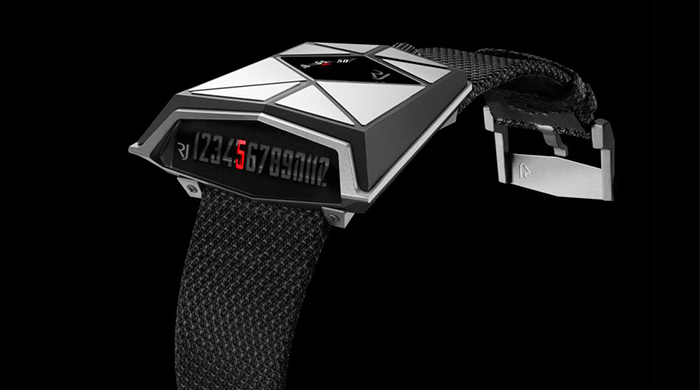
While most CEOs of luxury watch companies would go on about the business technicalities of their latest creations, Manuel Emch, CEO of Romain Jerome prefers to delve into the emotional significance of a timepiece and what it means to a wearer. We caught up with the rising star who has, since 2010, created iconic timepieces that have put the brand in a more provocative and outstanding position.
Please tell us how 2015 has fared for you and the company.
Every year we launch about six to seven new products, which is one every two months, more or less. But this year we had a few different things. We’re going to launch one last watch at the end of this year, which is a new video game (which I won’t talk about too much). We launched one a few weeks back, celebrating 30 years of Back to the Future, and we launched Tetris in July. It took us a year to develop the dials, and we managed to launch it two days before the tribute ended. We also launched the second Batman watch—the Spacecraft. We did 75 pieces for Batman‘s 75th anniversary and it took us three weeks to sell out. We didn’t expect it, although we thought that there must be a lot of Batman aficionados out there so we did another one.
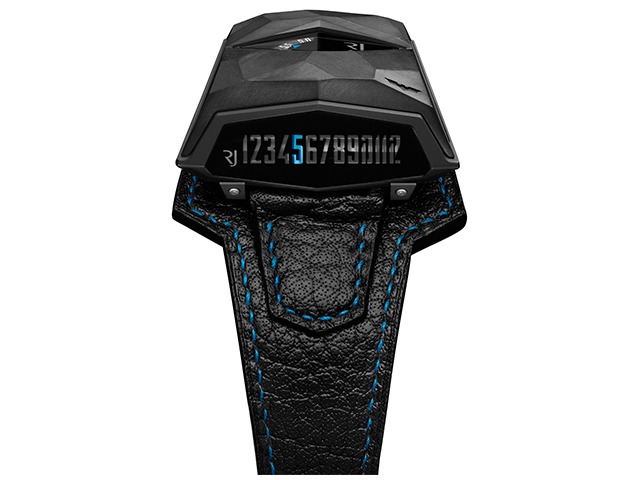
But for me, watches is an emotional object. It’s something you have to feel connected to. I believe that the world is changing, and it’s unstable. Watches is personal and emotional to me, therefore it has to be something that is different, unique, and by doing collaborations, we then create very personal timepieces. We don’t necessarily need to follow the same logic as other watch brands with volume, growth and profit etc; we’re trying to do it more artistically.
What do you want Romain Jerome to offer to the market?
It’s a question of vision. Watches were initially time-giving instruments. Today, nobody cares about it, because there are other time-giving devices. It has become a status symbol. What used to be common value of status has changed now. For example, some people would want to spend more on bicycles than on cars. The conception of status becomes subjective, so we have to be careful. We can’t say we’re of a certain status because we put gold in a watch, we have to be more than that.
And slowly we started to see the watch brands moving into artisan and craftsmanship. At the end, we have the same know-hows and artisans so we are all doing the same thing. It’s difficult to make yourself different when you start from and use the same bases. Watches are emotional objects of art, so we’re trying to create that. For me, business is not about business in the classic sense. I think we build brand equity just by being a little bit different and not looking at numbers necessarily. It takes a lot of time to build it, and we’re trying to give another approach to watchmaking—more personal, intimate and artistic.
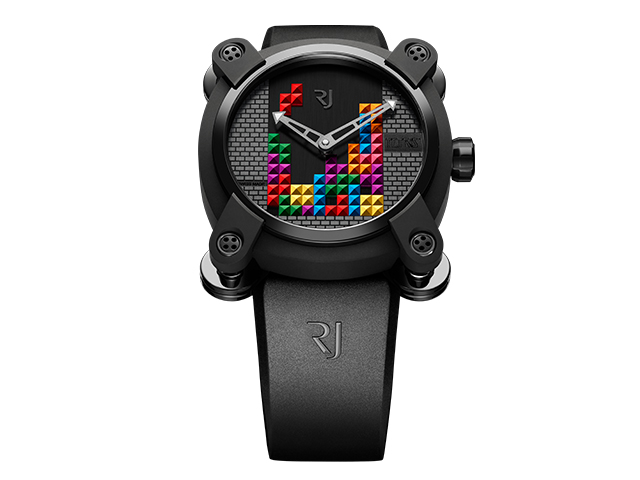
You mentioned it’s difficult to make something relevant nowadays, would you say it’s one of the biggest challenges in the industry now for Romain Jerome?
It’s interesting to see, especially now that the industry is facing a challenging year. Our industry has known a growth cycle of 30 years, why? Because there’s currently newer emerging markets (Asia.) We used to be artisans and creators, but now we’re businesses. We’re integrated luxury companies, but I think luxury is not something that’s sustainable over time. We have to remain unique, emotional and artistic, and it’s challenging to put that together with large-scale businesses. It’s funny because people call it the “watch industry”, which to me sounds mass-produced and it doesn’t fit with what we do, so I’d rather say we’re an artisanship. We’re very visible and global, and people like watches but we need to protect the idea that whatever we’re doing is art, because it’s the only thing sustainable with time. Businesses come and go, but not art.
Does these collaborations come personally from your own inspiration, with references to pop culture and such?
Our company now is about 10 years old, and when we launched it, we told ourselves we want to be a contemporary brand. But we noticed that history is a very strong emotion driver, and emotionality is what makes people go for watches. I told myself that we need to find something that people can connect to. History doesn’t need to be 200 to 300 years old, it needs to be something that you can connect to. Why can’t we use references that we can commonly share, such as cultural pop icons from the 70s and 80s? By doing this, we’re changing the level of discussion. We’re not talking about just the product, craftsmanship or mechanical complexity. We’re talking to the subconscious of people who can connect to these. These people who buy our products used to play these video games when they were young, and when they were young, they were innocent, joyful and happy. For some timepieces, we tried to relate it to references 50 years ago, but it didn’t do as well as watches related to things 30 years ago.
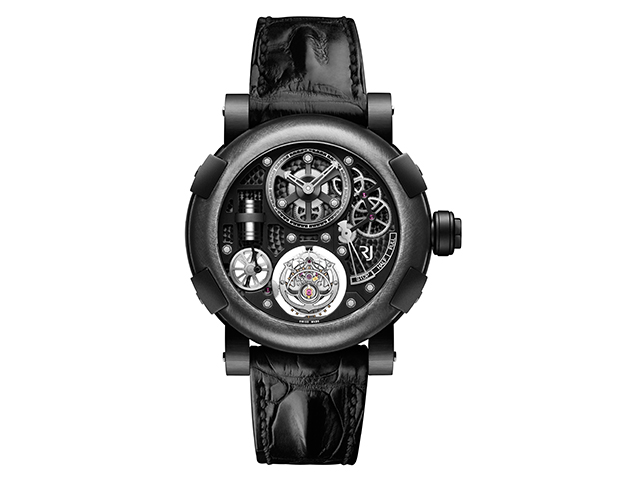
Why steampunk? It’s rather specific.
It’s an evolution of the Titanic. We started the company with the Titanic watches, and the beautiful thing is that it’s so provocative. It became the talk of the town quickly and made the brand what it is today. We told ourselves that we can’t work around one concept, we needed to bring it one step further. To design watches, you need inspiration. People can connect to that film, and for me, I was interested in post-industrial revolution, which was a sub-culture of that culture. Sub-cultures are always where the biggest creativity lies in, like pop art and rock music. It’s where new things come to begin. You can’t avoid the steampunk thing, especially with the retrofuturistic approach, you wonder, is it contemporary or is it old? When you start to dive into it, you’ll see that there’s a whole underground movement to it, kind of like Burning Man festivals. People are looking for new tribes and communities to relate to, and you can build brands in different tribes. It brings a whole new feel to inspiration and interaction.
What’s the next demographic you are targeting?
I’m interested in people who are avant-garde, because they build the brands of tomorrow. These opinion leaders, mostly, come from mature markets. I believe that Asia is looking into references, so we’re building that. Now, China is the biggest watch market, and things have changed in less than ten years. The mentality has changed as well, and it will change in the next decade. You can’t reduce a market of that size to common behaviour, so we’re trying to target people who are looking for cultural, more intimate watches. The conception of status is very personal.
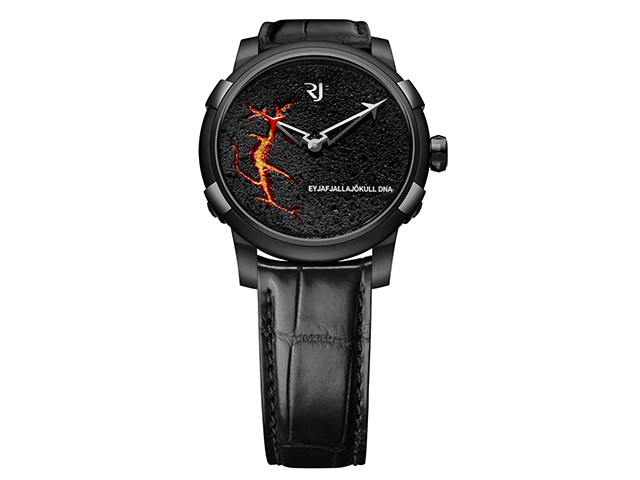
Do you have a favourite timepiece among the many?
The most important watch to me isn’t the most expensive or the most complicated or beautiful. It’s one that I have a personal relation to. The Volcano watch isn’t the most beautiful to me, but it’s important because when I took over RJ early 2010, we launched the Moonlion and Titanic in Baselworld, and a lot of the press asked me about a new Legend. I had no clue what we were going to do either. Two weeks later, I told myself, “You want a new Legend, I’ll make you a new Legend.” I did the design on Photoshop in ten minutes, we did a press release when the air field was closed.
The idea was just to basically get everyone satisfied. We basically created this watch that never existed. We told ourselves we aren’t going to sell it, so we made it so expensive that no one’s going to buy it. We looked at the most expensive steel watch in the market and double the price—we can pretend it’s a unique piece. It was $50,000 and I hesitated because it’s expensive and it doesn’t exist! But who cares right? And surprisingly, we had such a huge media return, it went on newspapers and on TV. We had 40 pieces on order by the end of the first day. I told myself, I don’t understand this at all!
We took a 100% risk and it worked, but we didn’t have anything to give. It’s good for PR I guess. We were contacted a few days later by an Icelandic woman who saw the watch on some blog, and she thought it was a great idea and she wanted to help us. Her husband was in charge of the Volcanic Institute of Iceland, so we got materials from Iceland, and everything flowed naturally. In July we had a prototype and September we delivered the first watch. So far, we’ve sold 300 of this. We were ironic with ourselves and it ended up being a successful commercial product, so this is an important watch to me because of its story.
Related stories:
Robert Ambord of Gübelin: Deeply inspired
A lesson in longevity with Philip Barat of Patek Philippe
| SHARE THE STORY | |
| Explore More |



